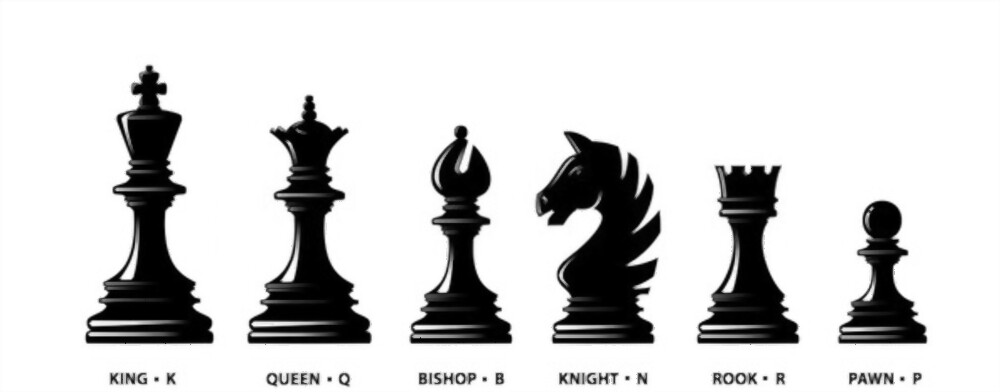Many people are aware of the game of chess, but they might not know the exact dimensions that make up each piece. Every single chess piece has its own size and shape, so understanding the measurements can be useful for both players and makers of chess sets. Here is a guide to the sizes of all the chess pieces on a standard board.
The pieces on a chess board come in varying sizes, with the King measuring 9.5 centimeters, the Queen 8.5 centimeters, the Bishop 7 centimeters, the Knight 6 centimeters, the Rook 5.5 centimeters, and the Pawn 5 centimeters in height. Each piece has its own distinct size, making them easily distinguishable from one another.
From the King and Queen to the pawns, each chess piece has its own exact dimensions. Understanding these measurements is essential for any chess enthusiast who wants to adhere to competitive gameplay rules. Here, we’ll discuss the detailed dimensions of each piece, their allowable tolerances, and the measurements for a chessboard.
Standards FIDE Size of Chess
FIDE** (Fédération Internationale des Échecs) is the only authority for standardizing chessboard and chess piece sizes. It is the world’s governing body for the sport of chess.
If you want to find out the specifications of chess equipment, the FIDE handbook is a great resource. It has all the information you need, from the dimensions of the board to the size of each chess piece.

For those who are pressed for time, this article will provide a quick overview of the sizing standards.
What Are The Sizes of Chess Pieces?
The pieces of a chess set must meet specific size requirements, as outlined in the FIDE (Federation Internationale des Échecs) handbook. The height of each piece should be within a certain range, and the King should always remain the tallest. Additionally, the diameter of the pieces should be around 40 and 50% of their height, with a 10% tolerance for deviations. The King must remain the tallest piece at all times.
The suggested heights, diameters, and allowed variations for these measurements are mentioned below in the chart.
| Chess Piece | Standard Height | Tolerated Height | Standard Base Diameter | Tolerated Base Diameter |
| Pawn | 5 cm | 4.5-5.5 cm | 2-2.25 cm | 1.8-2.75 cm |
| Rook | 5.5 cm | 4.95-6.05 cm | 2.2-2.75 cm | 1.98-3.025 cm |
| Knight | 6 cm | 5.4-6.6 cm | 2.4-3 cm | 2.16-3.3 cm |
| Bishop | 7 cm | 6.3-7.7 cm | 2.8-3.5 m | 2.52-3.85 cm |
| Queen | 8.5 cm | 7.65-9.35 cm | 3.4-4.25 cm | 3.06-4.675 cm |
| King | 9.5 cm | 8.55-10.45 cm | 3.8-4.75 cm | 3.42-5.225 cm |
FIDE has set certain requirements for the weight of chess pieces. They must be light enough to ensure comfortable and stable movement during gameplay.
Chess pieces come in a variety of materials, including wood, metal, and plastic. Wooden pieces weigh an average of 41.67 grams, while metal pieces are considerably heavier at 226.8 grams. In comparison, plastic pieces have an average weight of 53.86 grams. All materials used to make chess pieces must meet the standards set by FIDE, the World Chess Federation.
What Is The Standard Size of The Chessboard?
The size of the chessboard can have an impact on the way the game is played. According to FIDE regulations, the chessboard has a total of 64 squares and the size of the squares must be between 55mm and 65mm, which is the standard size for tournament play.
The suggested size of a chessboard is between 28.8 cm by 28.8 cm and 48 cm by 48 cm, in order to accommodate an 8×8 square grid.
The FIDE handbook does not specify the thickness of a chessboard, giving you the freedom to choose whatever dimensions best suit your needs. It is essential that a chess board be constructed in one single solid piece. If two pieces are used, the connection must be secured tightly with small gaps between the two parts.
What Is The Chess Table Size?
The chess table is a special type of table that is designed to hold the chessboard and pieces used to play the game.
For children’s chess events, the organizers must come up with tables that are suitable and comfortable for all players to use
Chess boards approved by the FIDE must adhere to specific measurements – they must be 110 centimeters long, with a 15% tolerance (between 93.5 to 121 centimeters), 85 centimeters in width, and 74 centimeters in height.
Related: Cornhole Court Dimensions And Components
Which Color Are The Chess Pieces?
The chess pieces are traditionally divided into two colors: white and black. The white pieces are traditionally made of light-colored wood, such as boxwood or ivory, while the black pieces are traditionally made of dark-colored wood, such as ebony or rosewood.
In a standard chess set, the white pieces are placed on the bottom two rows of the chessboard, and the black pieces are placed on the top two rows. The chess pieces are arranged in a specific order on the board at the start of the game, with the pawns in front, followed by the other pieces in descending order of importance.
The white pieces include the king, queen, rooks, bishops, knights, and pawns. The black pieces include the king, queen, rooks, bishops, knights, and pawns. The king and queen are the most important pieces in the game, while the pawns are the least important.
It’s worth mentioning that there are variations of chess sets, where the color of the pieces is different, for example, the Staunton chess set is the most common and it uses white and black pieces, but there are also sets that use red and green, or blue and yellow, to mention a few examples.
How Do Chess Values Work?

In chess, each piece has a different value, which represents its strength and importance in the game. The values of the pieces are used to determine the relative value of different positions and to make strategic decisions during the game.
The most valuable piece in chess is the queen, which has a value of 9 points. The queen is the most powerful piece on the board and can move in any direction, including diagonally, horizontally, or vertically.
The second most valuable piece is the rook which has a value of 5 points. It moves horizontally or vertically and is often used to control open lines and attack the opponent’s king.
Bishop is on the third number and has 3 points value. It can move diagonally.
The knight is on the fourth number with a value of 3 points. The knight has the unique ability to jump over other pieces and can be used to control key squares.
The pawn is the least valuable piece having a value of 1 point. It can only move forward.
It’s worth mentioning that values are not absolute, as the worth of a piece can change during the game depending on the position and circumstances of the game. For example, a rook that is trapped behind the pawns can have less value than a rook that can move freely.
Related: What Is The Ping Pong Ball Dimensions?
FAQs:
What is the best size for chess pieces?
The United States Chess Federation (USCF) recommends that chess boards should be fitted with square pieces measuring between 2 and 2.5 inches in size, while the king is required to have a height of between 3.375 and 4.5 inches.
Additionally, the pieces should have a comfortable weight for easy use.
What are the standard colors of chess pieces?
The traditional color scheme for chess pieces is white for the light-colored pieces and black for the dark-colored pieces. However, there are variations of chess sets that feature different colors, such as red and green or blue and yellow.
What are the values of chess pieces?
The queen is the most valuable piece in chess with a value of 9 points. The rook is the second most valuable piece with a value of 5 points, followed by the bishop at 3 points, the knight at 3 points, and the pawn at 1 point. These values can change during the game depending on position and circumstance.
What is the most important chess piece?
The queen is the most powerful and important chess piece in the game. It can move in any direction, including diagonally, horizontally, or vertically. With her powerful moves, she can control open lines and attack the opponent’s king.